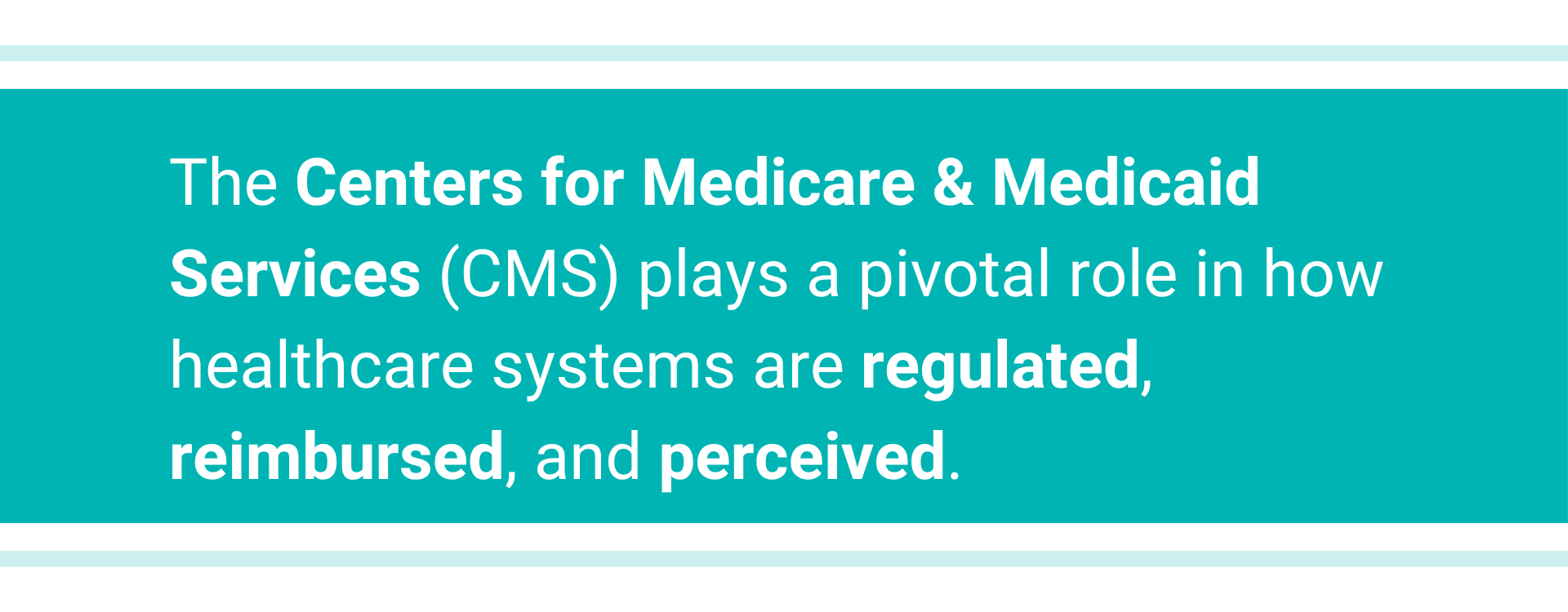Rebranding a healthcare organization is a rare and powerful opportunity to unify systems, clarify identity, and strengthen patient trust. But behind every creative launch sits a less glamorous, higher-stakes challenge: CMS compliance.
What starts as a creative project can quickly become a regulatory risk or even a billing problem with one missed update or unclear affiliation.
Why CMS should be part of every rebrand conversation
The Centers for Medicare & Medicaid Services (CMS) governs how healthcare organizations are identified, reimbursed, and audited. When a rebrand or name change occurs, it touches nearly every patient-facing and back-end system, from signage and billing to digital platforms and consent forms.
At the center of it all is CMS’s “public awareness” requirement, which mandates that patients clearly understand a facility’s hospital affiliation. While it’s straightforward in concept, it’s open to interpretation in practice. Some systems define it narrowly while others adopt broader standards to minimize compliance risk.
The stakes are significant: insufficient visibility can lead to delayed reimbursements, audit flags, or even interruptions to Medicare certification. As you’ll see, compliance is fundamental to maintaining operations and patient confidence.
Provider-based billing: the compliance thread that runs through everything

Provider-based billing (PBB) adds another layer of complexity. Facilities that bill as part of a hospital — outpatient centers, urgent care, and specialty clinics — must make their hospital affiliation unmistakable to patients.
That single rule affects almost every implementation decision:
- Exterior and interior signage
- Door vinyls and wayfinding
- Consent forms, legal documents, and billing statements
- Electronic medical records and patient portals
- Websites, call centers, and telecom systems
- Staff ID badges, uniforms, and shared spaces
When PBB requirements aren’t integrated early, teams often face expensive backtracking such as reprinting materials, reordering signage, or delaying launches to resolve compliance issues.
The lesson: treat CMS and PBB as core workstreams in your rebrand, not late-stage reviews.
Three practical strategies to reduce risk
1. Bring compliance to the table early
Many healthcare systems discover compliance dependencies too late i.e. when signage is already in production or IT updates are underway. Bringing compliance, legal, and IT teams into brand planning from the start helps prevent those surprises.
One nationwide health system integrated brand implementation with its Epic system rollout. That early collaboration between brand, legal, and IT teams ensured patient-facing materials matched what appeared in medical records and billing — a crucial compliance safeguard.
2. Align timelines to regulatory requirements
CMS allows a 90-day window for public-facing updates after a legal name change but in a large system, that can vanish quickly. Aligning rollout schedules to compliance milestones, not just creative deadlines, keeps projects on track and revenue uninterrupted.
For example, a multi-state health organization sequenced rebrand workstreams, from signage to ID badges to fleet vehicles, around compliance deadlines rather than design readiness. The result: fewer change orders, reduced rework, and smoother reimbursement continuity.
3. Audit continuously, not just once
Launch day isn’t the end of compliance. Ongoing audits ensure updates are completed across all locations and that no outdated signage or documentation lingers.
One major university health system built compliance audits into its signage program, tracking installation progress and standardizing messaging across departments. This helped eliminate inconsistent naming conventions that could confuse patients or raise CMS review questions.
Rebranding with compliance in mind
Healthcare rebranding is as much an operational challenge as a creative one. By embedding CMS and PBB requirements into the plan from the beginning, teams can prevent costly rework, protect billing continuity, and deliver a brand that patients and regulators can trust.
A thoughtful rebrand changes how your organization looks and strengthens how it operates.
If your health system is preparing for a rebrand, BrandActive can help you plan around compliance, coordinate cross-functional teams, and launch with confidence that every sign, system, and site is ready. Let’s talk.



